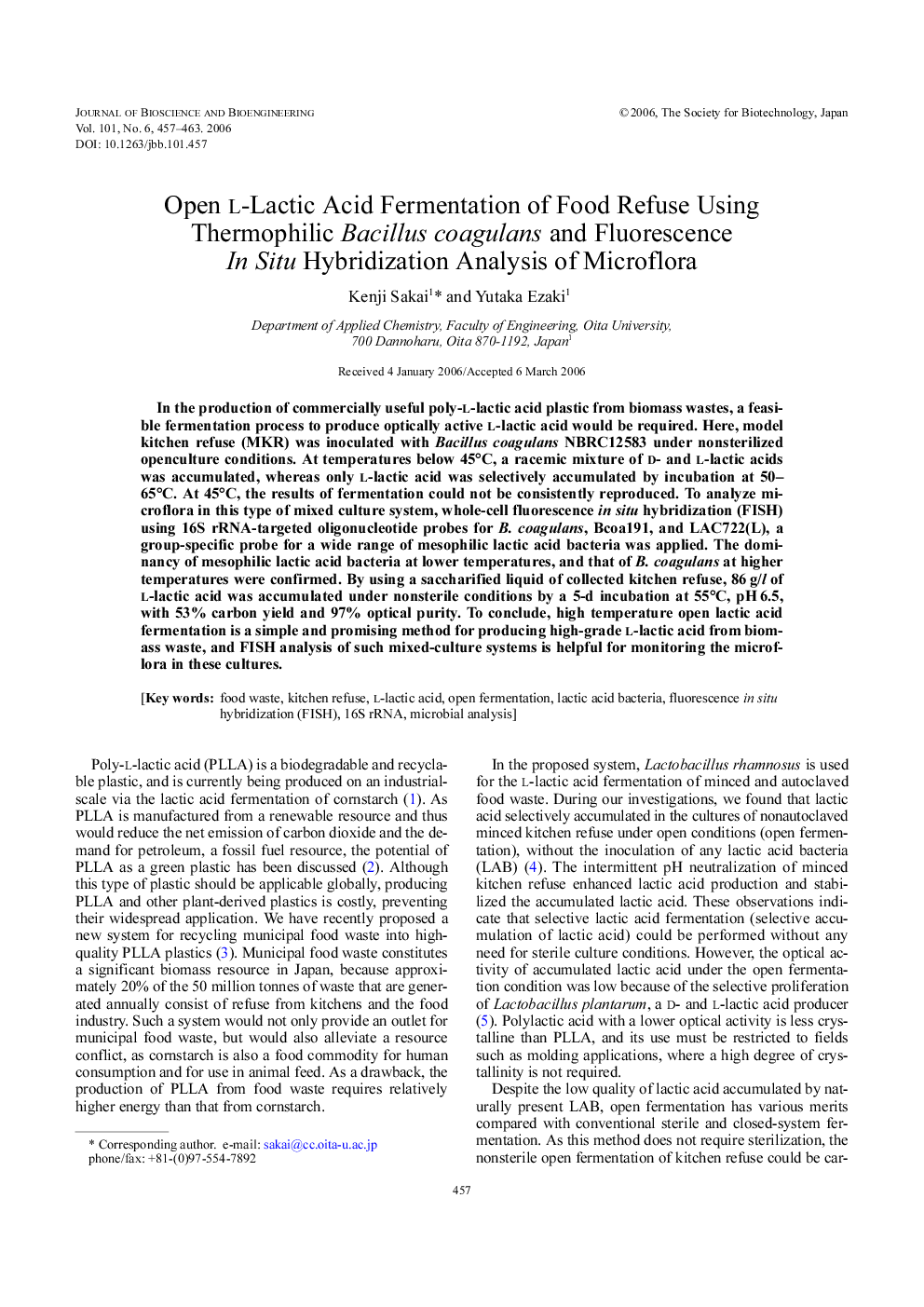| Article ID | Journal | Published Year | Pages | File Type |
|---|---|---|---|---|
| 22069 | Journal of Bioscience and Bioengineering | 2006 | 7 Pages |
In the production of commercially useful poly-L-lactic acid plastic from biomass wastes, a feasible fermentation process to produce optically active L-lactic acid would be required. Here, model kitchen refuse (MKR) was inoculated with Bacillus coagulans NBRC12583 under nonsterilized openculture conditions. At temperatures below 45°C, a racemic mixture of D- and L-lactic acids was accumulated, whereas only L-lactic acid was selectively accumulated by incubation at 50–65°C. At 45°C, the results of fermentation could not be consistently reproduced. To analyze microflora in this type of mixed culture system, whole-cell fluorescence in situ hybridization (FISH) using 16S rRNA-targeted oligonucleotide probes for B. coagulans, Bcoa191, and LAC722(L), a group-specific probe for a wide range of mesophilic lactic acid bacteria was applied. The dominancy of mesophilic lactic acid bacteria at lower temperatures, and that of B. coagulans at higher temperatures were confirmed. By using a saccharified liquid of collected kitchen refuse, 86 g/l of L-lactic acid was accumulated under nonsterile conditions by a 5-d incubation at 55°C, pH 6.5, with 53% carbon yield and 97% optical purity. To conclude, high temperature open lactic acid fermentation is a simple and promising method for producing high-grade L-lactic acid from biomass waste, and FISH analysis of such mixed-culture systems is helpful for monitoring the microflora in these cultures.
